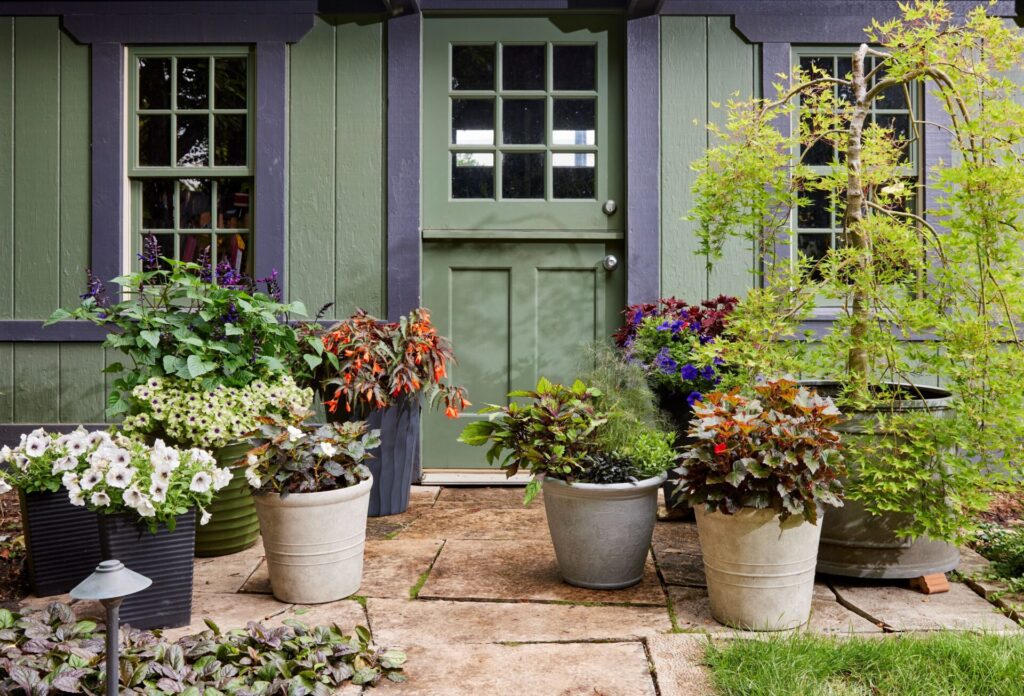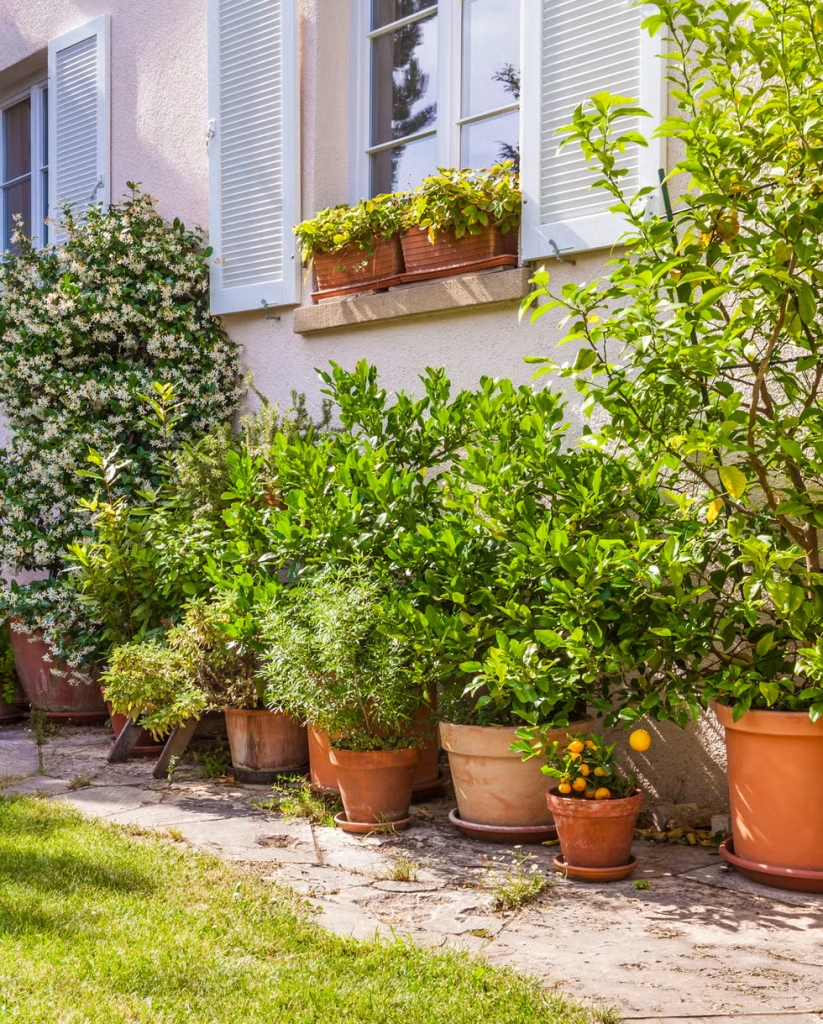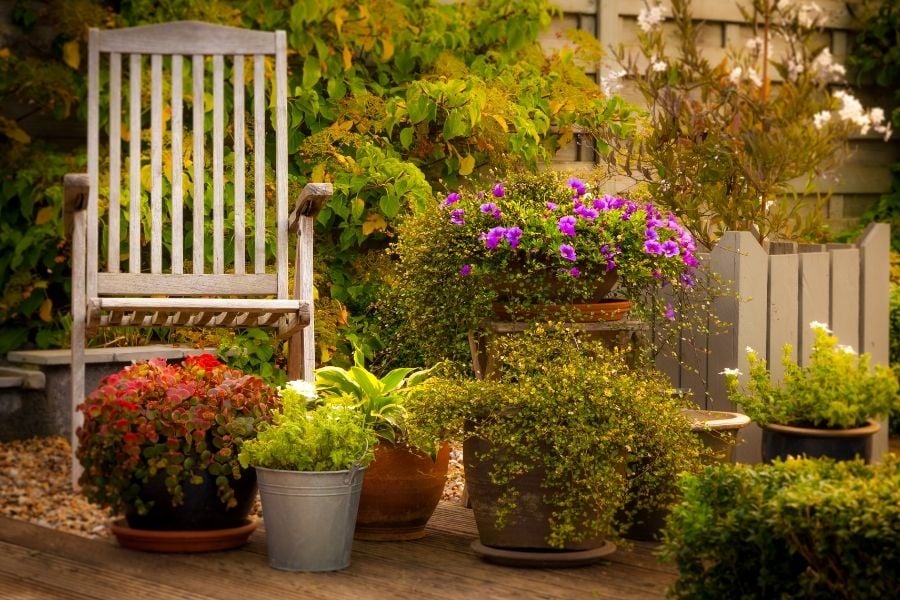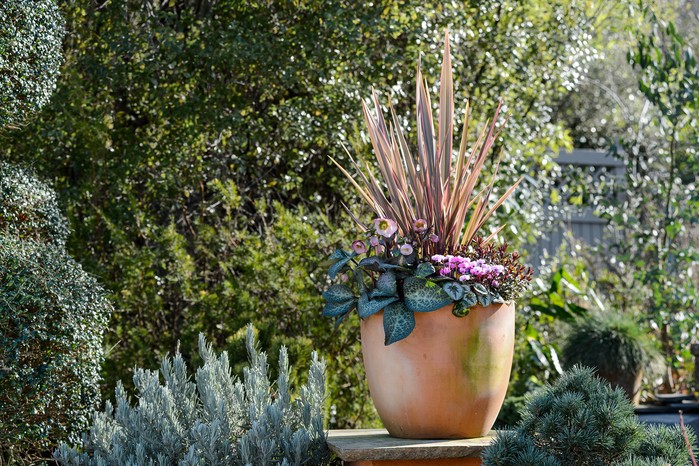Potted plants aren’t just for patios and balconies—they can be powerful tools in landscape design. Whether you have a large garden or a compact yard, learning how to use potted plants to enhance your landscape can add layers of texture, color, and versatility to your outdoor space. In this post, we’ll cover creative ideas, practical tips, and expert advice for incorporating potted plants into your landscape beautifully and effectively.


Why Use Potted Plants in Landscaping?
Using potted plants in landscape design offers several advantages:
Flexibility: You can rearrange them anytime to suit the season or event.
Control: Pots allow better control over soil type, moisture, and drainage.
Accessibility: Easier to maintain and protect from pests and diseases.
Aesthetics: Adds height, dimension, and visual interest to flat or dull spaces.
Choosing the Right Potted Plants for Landscaping
Not all potted plants are created equal. When planning your landscape design, choose plants based on:
✅ 1. Climate Compatibility
Pick plants suited for your climate zone. For instance, succulents and cacti are great for hot, dry areas, while ferns and hostas thrive in cooler, shaded environments.
✅ 2. Sunlight Needs
Know your space—observe how much sun your yard gets and choose plants accordingly. Place sun-loving plants like lavender or petunias in full-sun spots, and shade-lovers like impatiens under trees or awnings.
✅ 3. Maintenance Level
Opt for low-maintenance plants if you prefer a hands-off approach. Drought-tolerant options like rosemary, sedum, and ornamental grasses are great for busy homeowners.
Why Georgetown Lawns Need Core Aeration
Georgetown’s unique climate presents some challenges when it comes to lawn care. The region experiences hot, dry summers and mild winters, which can lead to dry soil that becomes compacted over time. Heavy foot traffic, lawnmowers, and even the weight of irrigation systems can also contribute to soil compaction, making it difficult for your grass to grow properly.
Selecting the Right Pots for Your Landscape
Pots themselves play a key role in the overall look. Here’s how to pick them:
Material: Terracotta pots look natural but dry out fast. Plastic pots retain moisture and are lightweight. Concrete pots are sturdy but heavy.
Size: Bigger pots hold moisture longer and allow for larger plants. Use small pots for accents or tabletop arrangements.
Color & Style: Coordinate pot colors with your home’s exterior or garden theme. Neutral tones offer versatility, while bold colors add visual pop.
Design Tips for Using Potted Plants in Landscaping
1. Create Focal Points
Use large, striking containers with bold plants as centerpieces for your patio, entryway, or garden path. Plants like canna lilies, agave, or dwarf citrus trees work great.
2. Use Pots for Layering
Stack different sizes of pots in a tiered arrangement to add depth and height. This trick works especially well in corner spaces or near fences.
3. Define Spaces with Planters
Use potted plants to create visual borders or “green walls” around seating areas, decks, or outdoor kitchens. Tall plants in matching pots can serve as a living privacy screen.
4. Seasonal Swaps
One of the best things about using pots is the ability to switch plants seasonally. In spring, try tulips and daffodils. In summer, go for bright annuals. Fall mums and winter evergreens keep your yard colorful year-round.
Container Gardening Ideas to Elevate Your Yard
If you want to get extra creative, consider these container gardening ideas:
Herb Garden in Pots: Grow basil, thyme, mint, and rosemary in grouped pots near your kitchen door.
Vertical Pot Gardens: Use wall-mounted containers or stacked planters to save space and add dimension.
Themed Arrangements: Create color-themed pot groups, like white blooms with silvery foliage, or warm-hued flowers for a tropical vibe.
Maintenance Tips for Potted Plants in Landscaping
Water Consistently: Potted plants dry out faster. In hot weather, daily watering may be necessary.
Fertilize Regularly: Use a slow-release fertilizer every few weeks for vibrant growth.
Rotate and Rearrange: Turn pots occasionally for even sun exposure and rearrange them seasonally to refresh your layout.
Final Thoughts: Landscaping with Potted Plants
Adding potted plants to your landscape is one of the simplest ways to create a vibrant, dynamic outdoor space. From flexibility in design to ease of maintenance, the benefits are endless. With a little creativity and the right plant choices, your yard can become a living canvas that changes with the seasons.
By following the tips above, you’ll know exactly how to use potted plants to enhance your landscape and elevate your garden with charm, structure, and year-round color.


